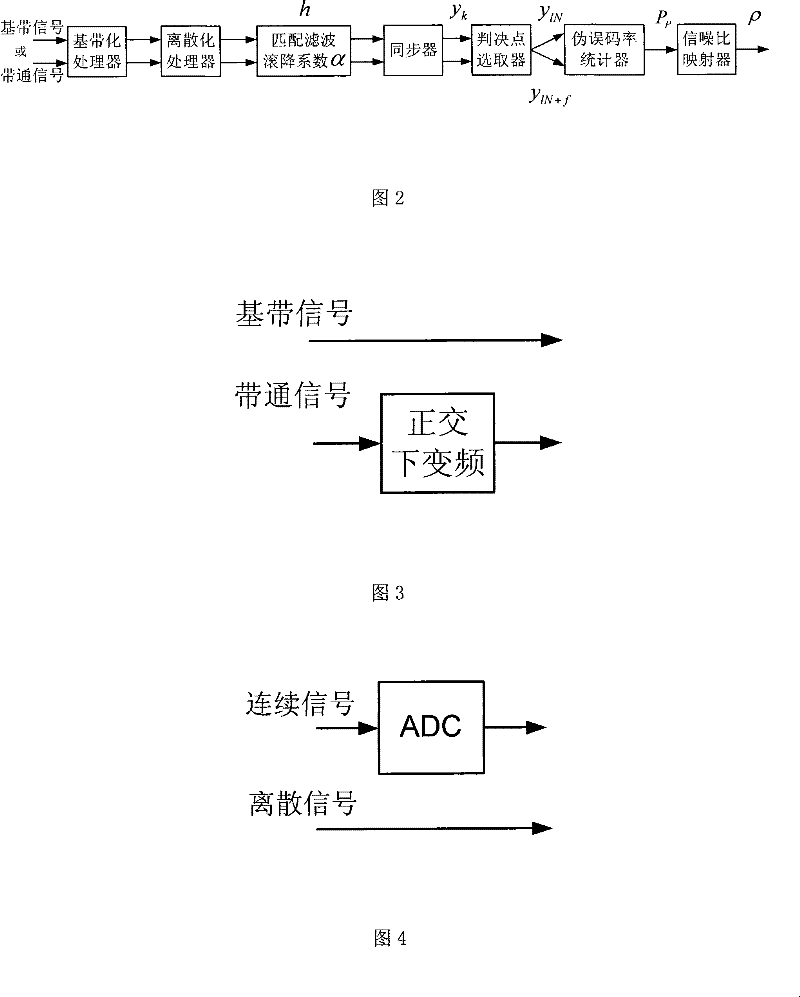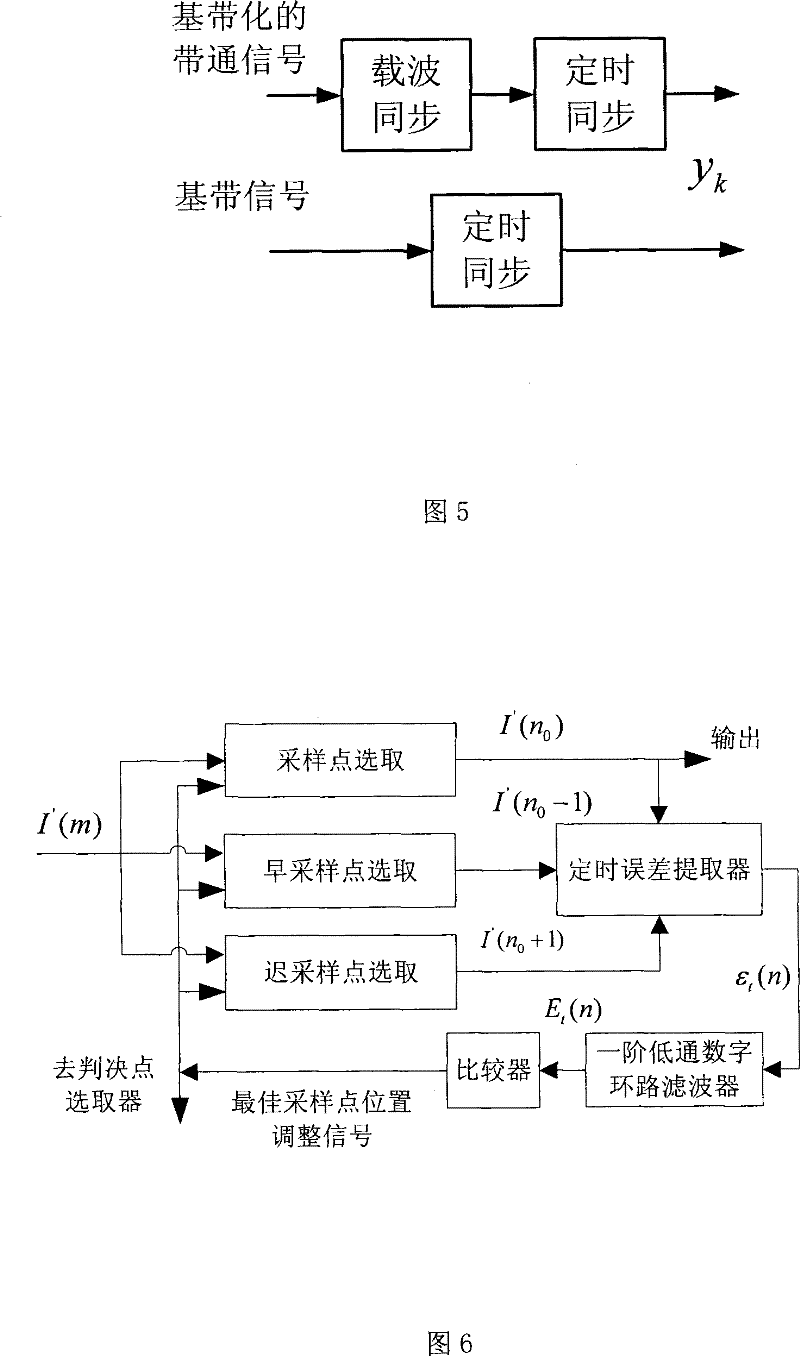Blind SNR estimating method based on pseudo-error rate statistics
A technology of bit error rate and blind belief, applied in the field of signal-to-noise ratio estimation in digital communication, can solve the problems of high computational complexity and great effort
- Summary
- Abstract
- Description
- Claims
- Application Information
AI Technical Summary
Problems solved by technology
Method used
Image
Examples
Embodiment Construction
[0065] Below in conjunction with accompanying drawing, introduce the content of the present invention in detail:
[0066] figure 1 is a flowchart of the SNR estimation method. like figure 1 shown. After the signal received by the receiver undergoes operations such as baseband processor, discretization processor, matched filtering, synchronization, etc., a discrete sampling signal sequence without frequency and timing deviation is obtained. The sequence passes through the decision point selector to obtain a two-way decision point sequence with the sampling rate equal to the symbol rate; the sequence passes through the pseudo-bit error rate statistician to obtain the estimated value of the pseudo-bit error rate. Finally, the value is passed through the signal-to-noise ratio mapper to obtain the estimated signal-to-noise ratio.
[0067] figure 2 It is the circuit block diagram of the signal-to-noise ratio estimator system. and figure 1 Correspondingly, the received signal...
PUM
 Login to View More
Login to View More Abstract
Description
Claims
Application Information
 Login to View More
Login to View More - R&D
- Intellectual Property
- Life Sciences
- Materials
- Tech Scout
- Unparalleled Data Quality
- Higher Quality Content
- 60% Fewer Hallucinations
Browse by: Latest US Patents, China's latest patents, Technical Efficacy Thesaurus, Application Domain, Technology Topic, Popular Technical Reports.
© 2025 PatSnap. All rights reserved.Legal|Privacy policy|Modern Slavery Act Transparency Statement|Sitemap|About US| Contact US: help@patsnap.com



